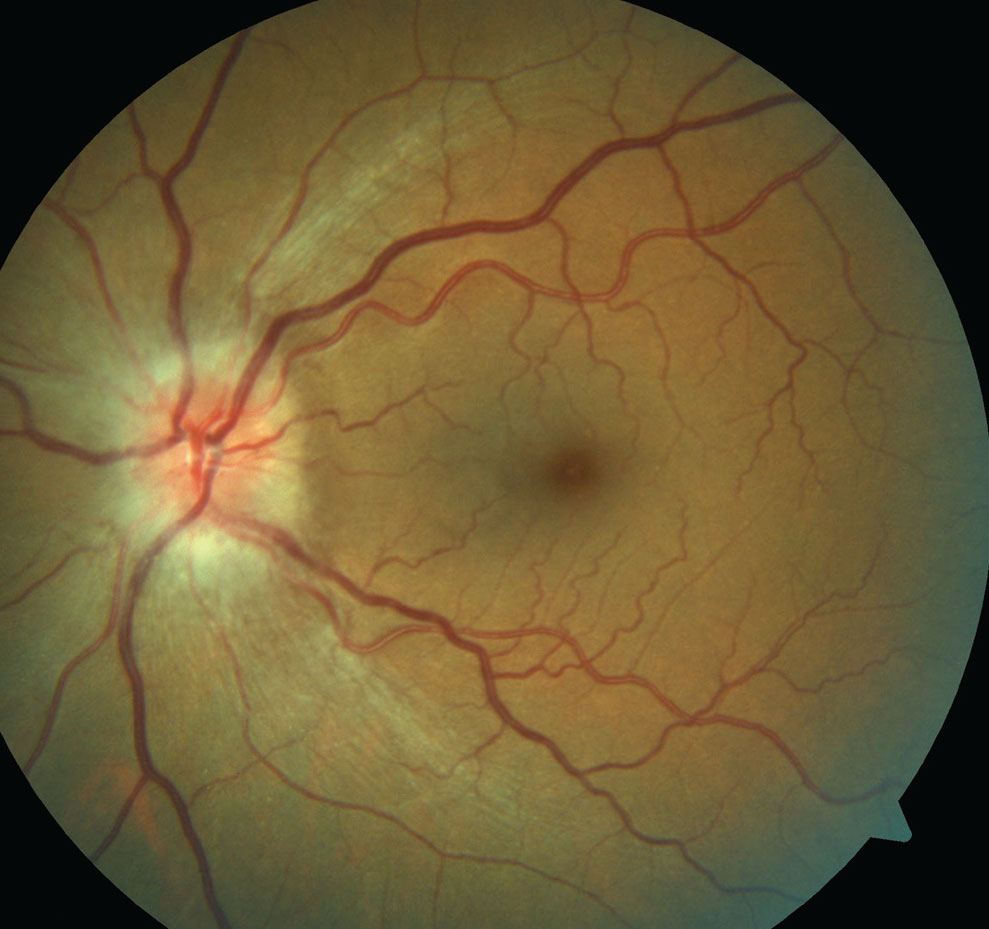 |
This study found high altitude to be a risk factor for NAION. Photo: Michael Trottini, OD, and Candice Tolud, OD. Click image to enlarge. |
Acute mountain sickness can manifest with visual disturbances, which have been associated with high-altitude cerebral edema. Symptoms of acute mountain sickness are related to hypobaric hypoxia, where the body is deprived of a sufficient supply of oxygen with symptoms typically increasing as the altitude increases. In a cohort of five patients who developed NAION after high-altitude exposure, researchers noted associations with relatively younger age at onset, disc-at-risk and obstructive sleep apnea.
The retrospective, cross-sectional case study evaluated five patients with high-altitude NAION that occurred at 7,000ft to 9,000ft above sea level, 28 patients with classic NAION that developed at sea level and 40 controls. All five patients with high-altitude NAION had clinically confirmed NAION within three to 21 days of onset and comprehensive follow-up evaluations (average follow-up of 23 months).
Other than high-altitude exposure, four out of the five patients had undiagnosed obstructive sleep apnea and one had systemic vascular risk factors. All patients had disc-at-risk in the contralateral eye. The best-corrected distance visual acuity was 20/20 to 20/70 at presentation and 20/70 to counting fingers at ≥ six months. Automated static perimetry revealed average mean deviation of -18.6dB at presentation and -22.1dB at ≥ six months. The average retinal nerve fiber layer was 244µm at onset and 59µm at ≥ six months. The average ganglion cell complex thickness was 50µm at onset and 52µm at ≥ six months.
Visual outcomes were similar in patients with high-altitude NAION and normal-altitude NAION. The patients with obstructive sleep apnea were started on home continuous positive airway pressure (CPAP) treatment.
“Given the known risk for recurrent NAION and the known effectiveness of CPAP for obstructive sleep apnea, we recommend that all patients with clinically confirmed sleep apnea are treated, especially during repeated high-altitude exposure,” the researchers wrote in their paper.
There is currently no effective treatment for high-altitude NAION. Treatment to prevent or reduce symptoms includes oxygen, acetazolamide and immediate descent. After addressing all NAION risk factors, no new events occurred in the high-altitude group within two to eight years with or without repeat high-altitude exposure.
“NAION can occur with high-altitude exposure resulting in severe irreversible vision loss,” the study concluded. “Understanding the physiologic changes in patients at high risk of NAION before and after high-altitude exposure can more clearly identify changes that contribute to developing high-altitude NAION.”
Liu YA, Mesentier-Louro KA, Shariati MA, et al. High altitude as a risk factor for the development of nonarteritic anterior ischemic optic neuropathy. J Neuroophthalmol. June 24, 2022. [Epub ahead of print]. |

